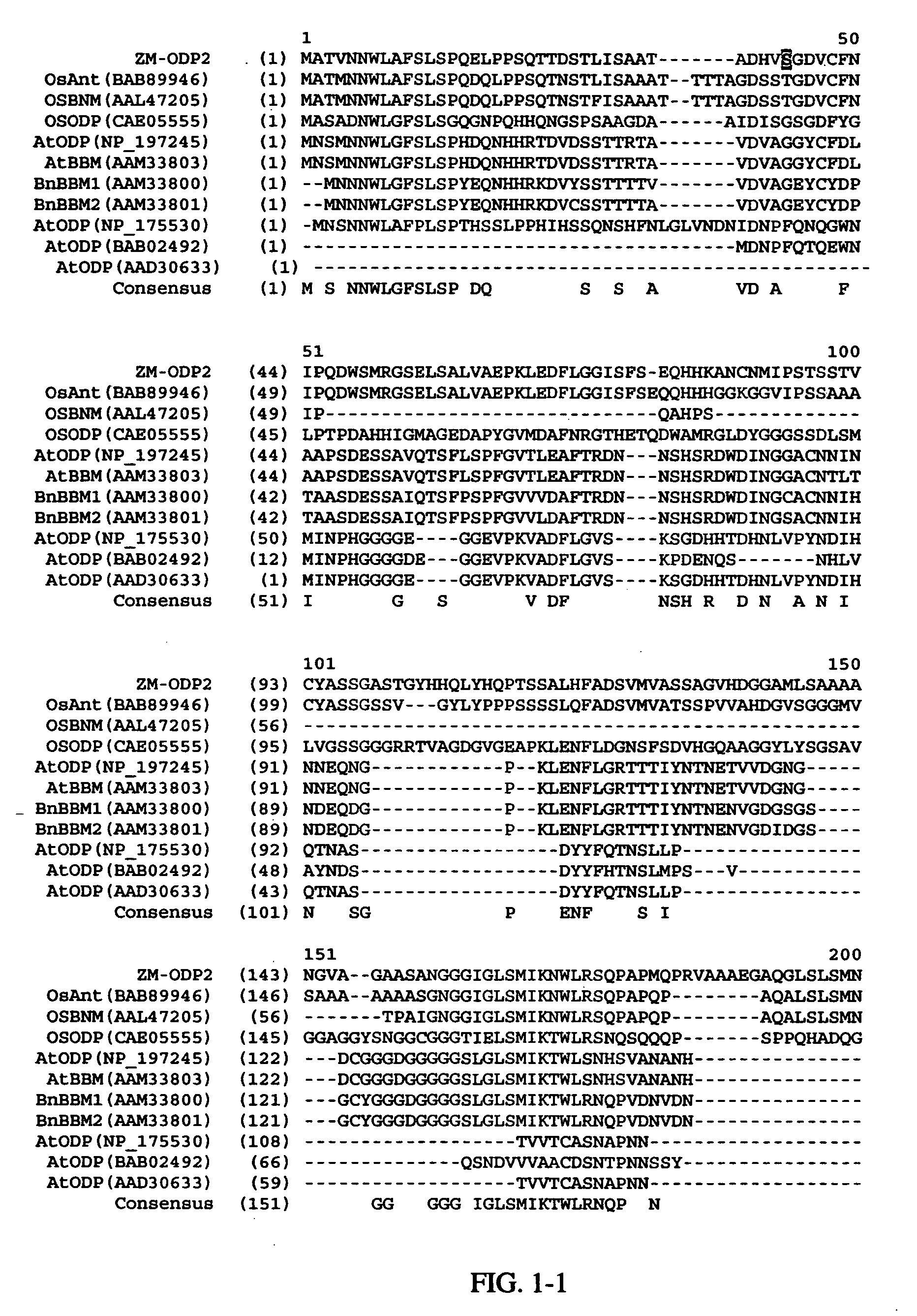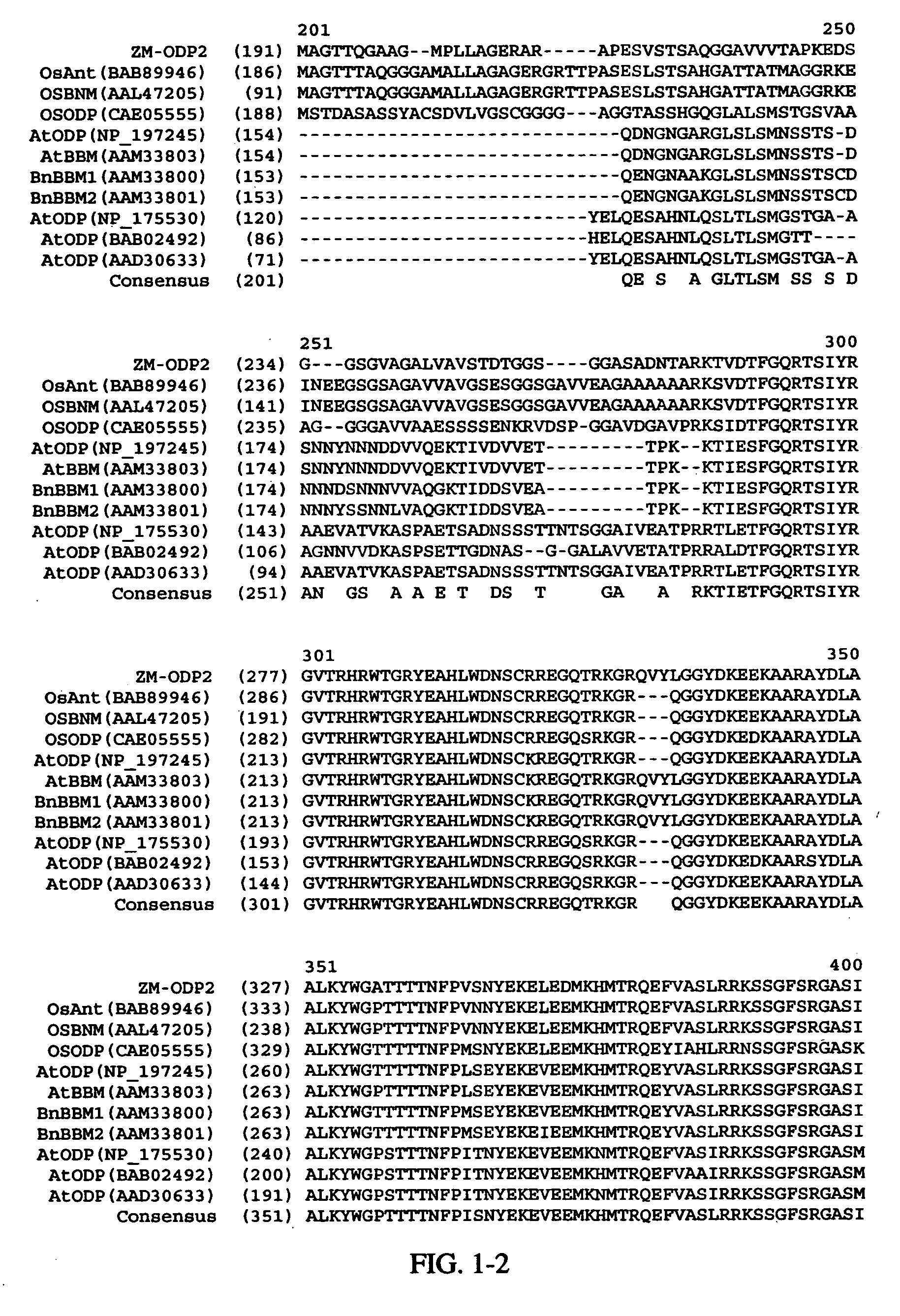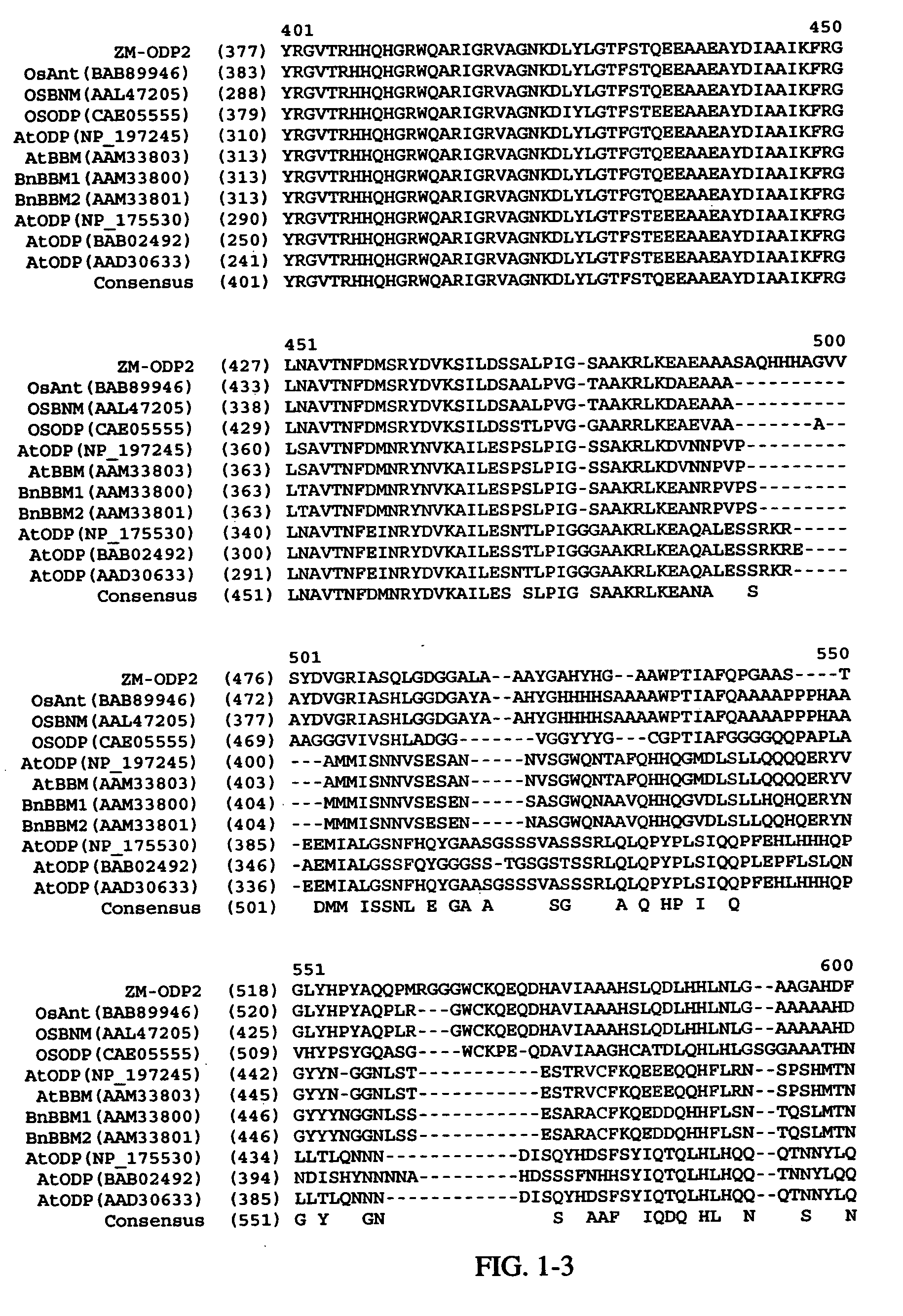AP2 domain transcription factor ODP2 (ovule development protein 2) and methods of use
a transcription factor and ap2 technology, applied in the field of gene activity and development in plants, can solve the problems of difficult to obtain a culture response from some maize genotypes, difficult to achieve the transformation of some agronomically important crop plants, and serious genotype limitations, etc., to achieve the effect of increasing or maintaining yield, and increasing the transformation efficiency of the plan
- Summary
- Abstract
- Description
- Claims
- Application Information
AI Technical Summary
Benefits of technology
Problems solved by technology
Method used
Image
Examples
example 1
Cloning of ZM-ODP2
[0188] The protein encoded by maize EST clone cpf1c.pk009.f4 was initially identified as the homologue of a rice putative ovule development protein (BAB89946). The EST clone was subjected to full-insert sequencing. Comparison of rice BAB89946 and the protein sequence encoded by the longest open reading frame (ORF) from cpf1c.pk009.f4 suggests that this clone may have an internal deletion which causes premature termination of the protein by at least 120 amino acids. A genomic fragment encompassing the potential deletion was amplified by PCR using DNA isolated from Hi II callus. Sequencing results confirm the presence of an extra 146 base pairs in the genomic fragment. When added to cDNA clone cpf1c.pk009.f4, this 146-bp can be read through in the same reading frame and the ORF is extended to encode a protein very similar to BAB89946 in length.
[0189] The full-length Zm-ODP2 (SEQ ID NO:1) used in the transformation was created by combining the 5′ end of cDNA clone c...
example 2
Sequence Analysis of Zm-ODP2
[0191] The ZM-ODP2 sequence of the invention was analyzed for conserved domains. FIG. 1 shows an alignment of the amino acid sequence of Zm-ODP2 (SEQ ID NO:2) with various polypeptides sharing sequence similarity to the Zm-ODP2 sequence. Specifically, Zm-ODP2 shares over its full-length about 65.4% sequence identity and 72.7% sequence similarity with OsAnt (Accession No. BAB89946; SEQ ID NO:25). Zm-ODP2 shares over its full-length about 57.1% sequence identity and about 62.3% sequence similarity to OSBNM (Accession No. AAL47205; SEQ ID NO:27). Zm-ODP2 shares over its full-length about 42% sequence identity and about 53.2% sequence similarity to OSODP (Accession No. CAE05555; SEQ ID NO:29). Zm-ODP2 shares over its full-length about 37% sequence identity and about 45% sequence similarity to BnBBM2 (Accession No. AAM33801; SEQ ID NO:33). Zm-ODP2 shares over its full-length about 38% sequence identity and about 47% sequence similarity to BnBBM1 (AAM33800; SE...
example 3
Variants of Zm-ODP2
[0193] A. Variant Nucleotide Sequences of Zm-ODP2 (SEQ ID NO:1) That Do Not Alter the Encoded Amino Acid Sequence
[0194] The Zm-ODP2 nucleotide sequence set forth in SEQ ID NO:1 was used to generate 6 variant nucleotide sequences having the nucleotide sequence of the open reading frame with about 70.6%, 76.1%, 81.2%, 86.3%, 92.1%, and 97.1% nucleotide sequence identity when compared to the starting unaltered ORF nucleotide sequence of SEQ ID NO:1. These functional variants were generated using a standard codon table. While the nucleotide sequence of the variant was altered, the amino acid sequence encoded by the open reading frame did not change.
[0195] The variants of Zm-ODP2 using this method are set forth in SEQ ID NOS:6-11. Specifically, SEQ ID NO: 6 shares about 97.1% nucleic acid sequence identity to the Zm-ODP2 sequence of SEQ ID NO:1; SEQ ID NO: 7 shares about 92.1% nucleic acid sequence identity to SEQ ID NO:1, SEQ ID NO:8 shares about 86.3% nucleic acid...
PUM
| Property | Measurement | Unit |
|---|---|---|
| temperature | aaaaa | aaaaa |
| temperature | aaaaa | aaaaa |
| pH | aaaaa | aaaaa |
Abstract
Description
Claims
Application Information
 Login to View More
Login to View More - R&D
- Intellectual Property
- Life Sciences
- Materials
- Tech Scout
- Unparalleled Data Quality
- Higher Quality Content
- 60% Fewer Hallucinations
Browse by: Latest US Patents, China's latest patents, Technical Efficacy Thesaurus, Application Domain, Technology Topic, Popular Technical Reports.
© 2025 PatSnap. All rights reserved.Legal|Privacy policy|Modern Slavery Act Transparency Statement|Sitemap|About US| Contact US: help@patsnap.com



